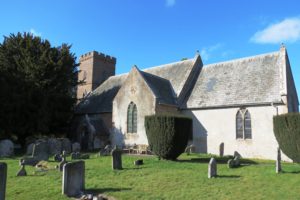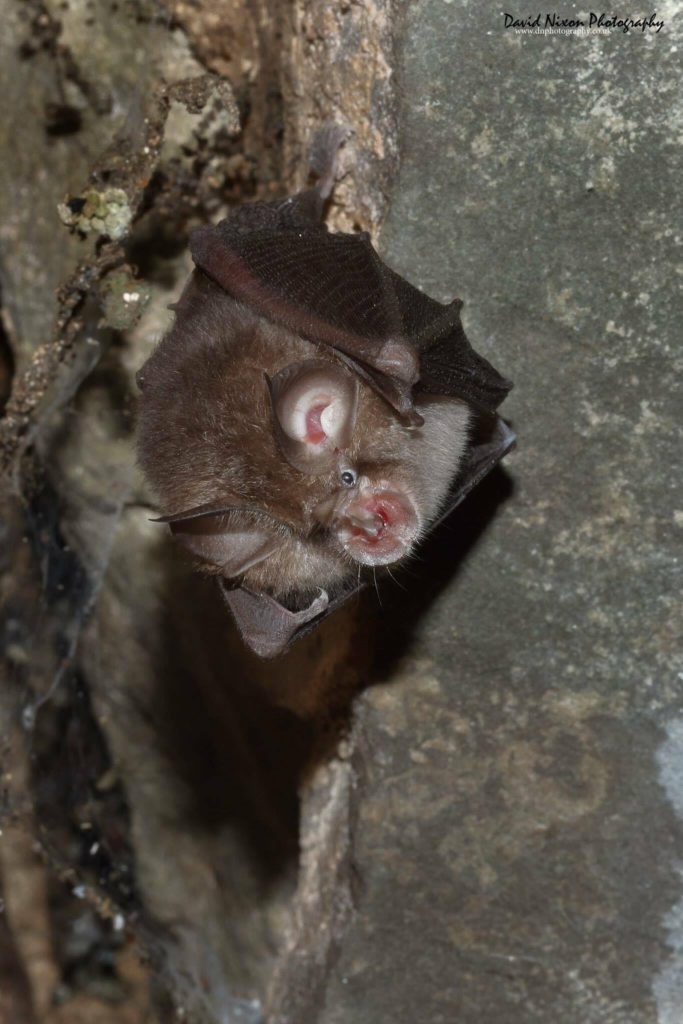Udall-Martin Associates were fortunate enough to carry out Bat Surveys for four local Herefordshire and Worcestershire church projects in 2015 and 2016, namely, St. Bartholomew’s Church in Ashperton, Herefordshire, St. Peter’s Church in Bromyard, Herefordshire, St. John’s Church in Bromsgrove, Worcestershire and St. Lawrence’s Church in Weston-under-Penyard, Herefordshire. Renovation works were proposed at each church.
Bat Surveys and Roosting in Churches
It is well known that churches are often used by bats for roosting, although perhaps not in the belfry, as so many assume (as these areas can often be quite open, draughty and noisy!). Bats will utilise many areas of a church, including beneath roof tiles and raised lead flashing and gaps behind missing mortar and timber joists.
Roosting bats use different parts of a building at various times of year, as specific areas provide the right micro-climate for certain types of roosting. For example, south facing aspects provide ideal bat maternity roost conditions, when the heat of the sun keeps the roosts warm, whilst features on north facing aspects, cellars and basements can provide cool/stable conditions ideal for bat hibernation.
In 2015 Udall-Martin Associates were commissioned to carry out bat scoping surveys and bat dusk emergence/dawn re-entry surveys at each church, to assess the potential impacts of the renovation works on roosting bats and to produce ecology reports detailing appropriate mitigation and compensation measures.
All species of British bat and their roosts are protected under British law by the Wildlife and Countryside Act 1981 (as amended), and bats are classified as European Protected Species under The Conservation of Habitats and Species Regulations 2010 (as amended). This makes it an offence to kill, injure or disturb a bat and to destroy any place used for rest or shelter by a bat. The Herefordshire churches are set in beautiful rural locations, with pasture, mature woodland, moats and hedgerows in the close vicinity, providing ideal potential bat foraging and commuting habitat. Therefore, the presence of roosting bats in these churches was no surprise.
We found several bat species at the churches comprising the rare lesser horseshoe bat (Rhinolophus hipposideros) (pictured), fairly common natterers’ bat (Myotis nattereri) and common bat species of brown long-eared bat (Plecotus auritus), common pipistrelle bat (Pipistrellus pipistrellus) and soprano pipistrelle bat (Pipistrellus pygmaeus).
The bat roosts found included maternity roosts, where females gather to give birth and raise their young. This type of roost is of high conservation significance and therefore disturbance and loss is to be avoided. This led to timing implications for the renovation work as no works could be permitted to affect the maternity roosts during the bat maternity season which runs from May to September, inclusive. Bats are highly vulnerable at this time of year and any disturbance can cause the females to abandon their young and lead to bat fatalities.
The presence of roosting bats which would be affected by the proposed renovation works meant a European Protected Species (EPS) mitigation licence for bats required from Natural England (NE) to allow the renovation works to proceed at each church. Udall-Martin Associates produced a detailed Method Statement to accompany each of the four EPS mitigation licence applications. The Method Statements included details of measures to avoid/minimise the risk of harming and injuring roosting bats during the renovation works and to ensure long-term bat roosting compensation habitat was retained/created.
In 2016 we obtained Natural England EPS mitigation licences for roosting bats to allow the renovation works to proceed whilst meeting wildlife legislation. Udall-Martin Associates carried out the on-site mitigation works as per the EPS licence involving supervising the stripping of building materials over the bat roosts and potential bat roosting features to be affected by the proposed works. Initially bat roosting boxes were installed on trees within the church yards to house any bats revealed by the destructive searches. Long-term bat roosting habitat will involve installing specially designed bat access tiles into the roofs.
Udall-Martin Associates have carried out numerous bats surveys throughout the UK, including Derbyshire, Gloucestershire, Herefordshire, Leicestershire, Worcestershire, Warwickshire, North Wales and South Wales. Our bats surveys are carried out by our Natural England/Natural Resources Wales licensed bat ecologists according to current best practice/standard survey guidelines. Also, our bat mitigation and compensation works follow the bat mitigation guidelines as set out by Natural England.
Please note that bat scoping surveys of buildings (i.e. internal and external inspections for evidence of roosting bats such as droppings) can be carried out at any time of year; however, the statutory agencies stipulate that bat dusk emergence/dawn re-entry surveys of buildings/structures should be carried between May and September, inclusive, with the optimal bat survey period being May to August.
Udall-Martin Associates provides a pragmatic and practical approach and works closely with the statutory agencies to ensure proportionate mitigation and compensation is recommended.
Udall-Martin Associates can provide for all your bat surveys needs. Call us today on 01684 540695 for a quotation or advice. We would be happy to assist with your planning application, satisfying planning conditions and/or obtaining a European Protected Species mitigation licence.

